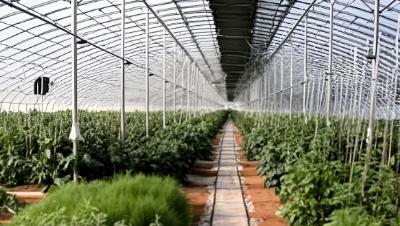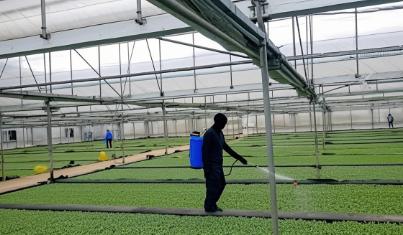Hey there, greenhouse growers! If you're curious about what the future holds for managing pests in your greenhouse, you're in for a treat. The landscape of greenhouse pest management is evolving rapidly, driven by technological advancements and a growing emphasis on sustainability. Let's explore the key trends shaping the future of greenhouse pest management.
1. Increased Adoption of Biological Control
Biological control methods are gaining traction as more growers seek eco-friendly alternatives to chemical pesticides. This involves using natural predators and microorganisms to manage pest populations. For example, predatory mites like Phytoseiulus persimilis can effectively control spider mites, while the parasitic wasp Encarsia formosa is a proven solution for whitefly infestations. The use of biological control agents not only reduces the risk of pesticide resistance but also aligns with consumer demand for sustainable practices.

2. Integration of AI and IoT Technologies
The future of greenhouse pest management is getting smarter with the integration of AI and IoT technologies. AI-driven systems can analyze data from IoT sensors to predict and prevent pest outbreaks. These systems use machine learning algorithms to detect patterns and anomalies, allowing for early intervention and targeted treatments. For instance, a greenhouse in the Netherlands uses an AI-driven system to monitor tomato plants for signs of disease, alerting the grower to take immediate action.
3. Development of New and Improved Products
Companies are continuously developing new products to enhance pest management. For example, BASF is expanding its product labels to include more crops and application methods, such as the Velifer Bioinsecticide/miticide, which now includes dip-and-drench options. Envu is also introducing new solutions like Adept insect growth regulator and Floramite miticide, which are effective against a range of pests and compatible with IPM programs.
4. Sustainable and Eco-Friendly Practices
There's a growing trend towards sustainable and eco-friendly pest control methods. This includes the use of botanical-based pesticides derived from natural plant extracts, which are non-toxic and biodegradable. Additionally, practices like rainwater harvesting are becoming more popular, as they not only save water but also provide a better growing environment for plants.
5. Use of Drones and Robots
Drones and robots are finding their way into greenhouse pest management. These tools can access hard-to-reach areas and perform pest control tasks more efficiently and safely. For example, robots guided by the Galileo satellite can autonomously detect and treat pest infestations, reducing the need for manual labor and chemical sprays.
6. Soil Solarization
Soil solarization is an effective method for disinfecting greenhouse soil by using solar energy. This involves covering moist soil with transparent polyethylene film to trap solar heat, raising the soil temperature to levels that kill pathogens and weed seeds. This method is particularly useful for preparing soil before planting and can significantly reduce the need for chemical soil treatments.

Conclusion
The future of greenhouse pest management is exciting and full of innovative solutions. By embracing biological control, integrating smart technologies, and adopting sustainable practices, growers can effectively manage pests while minimizing environmental impact. Stay ahead of the curve by keeping up with the latest advancements and incorporating these trends into your greenhouse management strategy.
Welcome to have a further discussion with us.
Phone: +86 15308222514
Email: Rita@cfgreenhouse.com
Post time: Jul-08-2025







 Click to Chat
Click to Chat